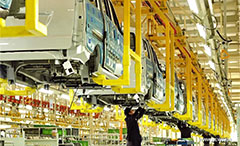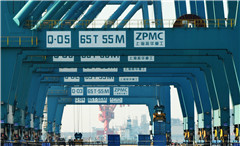China’s economy continues stable development
2017-08-30
english.gov.cn/People's Daily Online
Although major economic statistics from July released recently shows some slowdowns in industry, investment, consumption and exports, China’s economy saw stable and sound growth.
Judging from the four macroeconomic indicators, China’s economy is running within a reasonable range. The foundation to support this trend is being consolidated continuously. Affected by seasonal and other factors, some slight fluctuation is normal and is the result of market adjustment.
Employment is getting better as unemployment rate in July was 5.1 percent, lower than in the same period last year. Commodity prices are generally stable as CPI in May, June and July increased 1.5 percent, 1.5 percent and 1.4 percent, respectively, and PPI in the three months all increased 5.5 percent. The balance of international payments continues to improve.
As supply-side structural reform continues, and the pushing forward in capacity reduction, destocking, deleveraging, cost reduction and improvement in underdeveloped areas, reform expanded to many key areas including real economy and agriculture. Real estate regulations achieved initial success.
Supply-side structural reform plays a key role in promoting stable development of the economy. It improved economic results and development quality. The utility efficiency of energy and resources was generally lifted. Market expectations also improved. The Consumer Confidence Index (CCI) in July was 114.6, which was 1.3 higher than in June. International organizations also adjusted higher expectations for China’s economic growth.
Service and consumption-driven economic growth has forged ahead with economic structural adjustments while speeding up transformation and upgrading.
The service sector has moved up the value chain with an added value accounting for 54.1 percent of GDP and an economic contribution rate reaching 59.1 percent. High-tech and equipment manufacturing industries gained momentum.
And consumption also played a crucial role in promoting economic growth with optimized investment structure. For the first half, the contribution rate of consumption to economic growth reached 63.4 percent, with more investments involved with high-tech and service sectors.
Also, China’s strategic cross-regional development has tapped the potential for new cooperative growth among regions. From an international perspective, China aligned its Belt and Road Initiative with neighboring countries’ development strategies. Domestically, China boosted the Beijing-Tianjin-Hebei regional development and Yangtze River economic belt and promoted interconnectivity among China’s eastern, middle and western, and northeastern regions.
The “mass entrepreneurship and innovation” strategy has been further pushed forward with old growth drivers being replaced by new ones.
An increasing number of newly registered enterprises, maker spaces, SOE innovative platforms and patent applications indicated the successful promotion of mass entrepreneurship and innovation.
The strategy has also led to better production transformation of science and technologies, with a batch of major sci-tech achievements such as the successful docking of China’s first cargo spacecraft Tianzhou-1 with the Tiangong-2 space lab and the maiden flight of the China-built passenger aircraft C919.
In addition, prosperous development of emerging industries and new business models including new energy vehicles, internet finance and mobile payment also were seen as a main factor in promoting economic growth.


